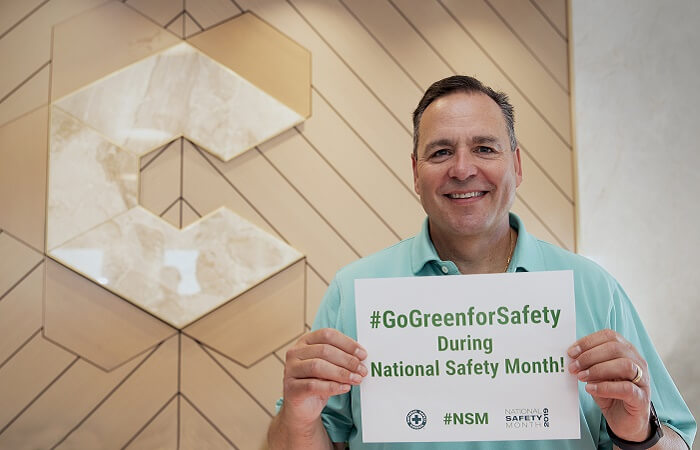National Safety Month: What is the Data Trying to Tell Us?
In a high-risk industry, safety isn’t a pleasant afterthought – it’s part of our license to operate.
In a high-risk industry, safety isn’t a pleasant afterthought – it’s part of our license to operate.

With National Safety Month coming to a close, allow me to share the state of worker safety in the United States:
Think about those numbers for a second. That’s 4,414 people who went to work one day and never returned home. And another 4.5 million people who went to work and got hurt.
Compared to many other places in the world, we have an excellent emergency infrastructure in place in the United States, and we have reasonable safety regulations that help keep workers safe. So why are so many people getting injured or losing their lives in American workplaces?
Fortunately, data compiled by the Bureau of Labor Statistics can give us all some guidance on what we can do better as business leaders to keep our colleagues safe. In 2017, 85% of all work-related injuries fell into one of three categories.
The most common injury, reported by 30 out of every 10,000 full-time workers, was related to overexertion. The 45-54 age group is most at risk for this type of injury, and the back is the most frequently injured part of the body.
The second most common injury, reported by 23.2 out of every 10,000 full-time workers, is related to contact with objects or equipment at work. At manufacturing sites, this type of injury is sometimes referred to as being in the "line of fire" in the path of a moving object. The most common age group at risk for this type of injury was between 16 and 24 years old.
Close behind are slips, trips and falls, which were reported by 23.1 out of every 10,000 full-time workers. Workers aged 55 or older were most at risk for this type of injury.
Let’s step back and look at what the data is telling us. Younger workers are most at risk of being injured by equipment or moving objects. Older workers are most at risk to slip and fall in a workplace. And workers in between are especially at risk for pulling their backs.
Now that we have this information, what can we do with it?
At Chemours, we use companywide data to help us identify our most specific vulnerabilities. This data helps us identify opportunities to run targeted safety education and awareness campaigns to groups that we know are most at-risk for a certain type of incident. In the past, we’ve launched safety education campaigns for employees at specific site locations or who have specific job functions.
We’ve also used data to launch broader education campaigns across the company to help prevent more common injuries. For instance, our company has spent considerable time educating our colleagues on the same slips, trips and falls, line-of-fire injuries and back injuries that have been identified by the Bureau of Labor Statistics.
But we’re not stopping there. Last year, Chemours published an ambitious list of ten goals we’re going to strive to accomplish by 2030. One of those goals is to improve our employee, contractor, process and distribution safety performance by at least 75%. We will achieve this goal through grit, determination and focus, but also by analyzing trends in our safety data and specific education campaigns.
In our industry, safety isn’t a pleasant afterthought – it’s part of our license to operate. Some of our employees work in potentially hazardous environments and with potentially hazardous materials, making safety education and awareness campaigns all the more crucial.
We invite you to join us in using data and targeted employee education campaigns to help improve the safety of all workers, not just during National Safety Month, but all year long. Every company, every leader and every employee can play a role. What are you doing to make your workplace safer for yourself and your colleagues?
With a century-long legacy, the National Safety Council is a global center for safety expertise. Let's work together to align resources. We look forward to learning about ways we can join efforts to expand safety everywhere!
There are no items in your cart